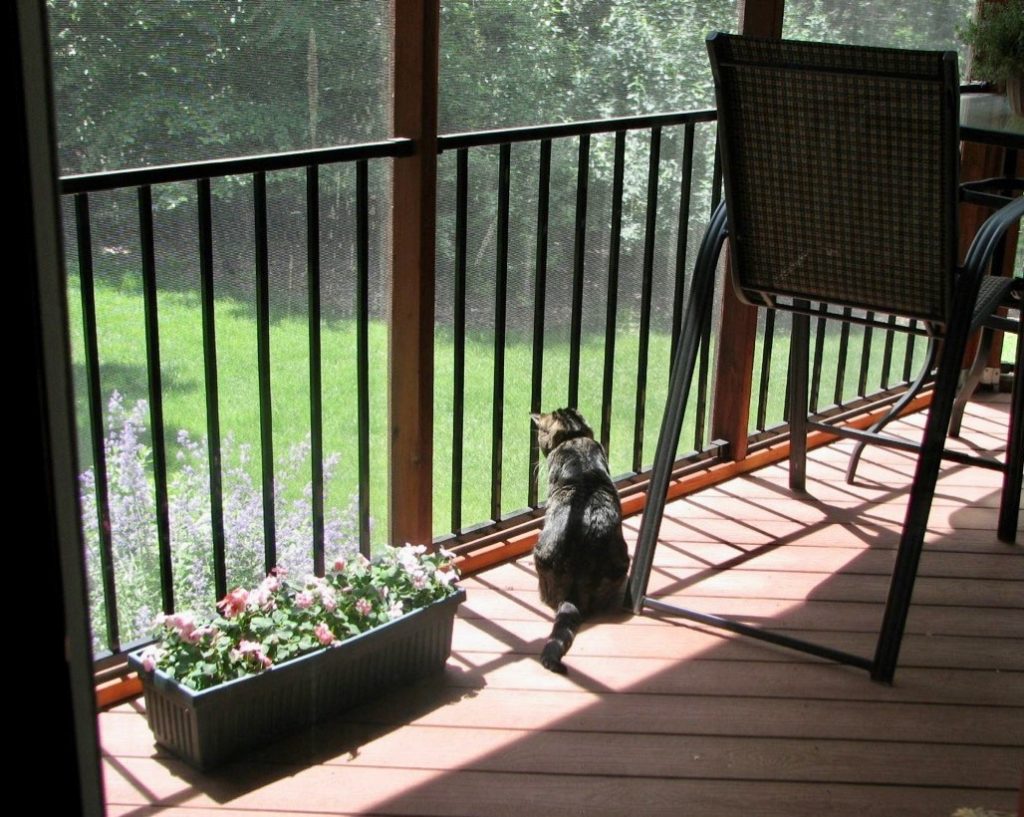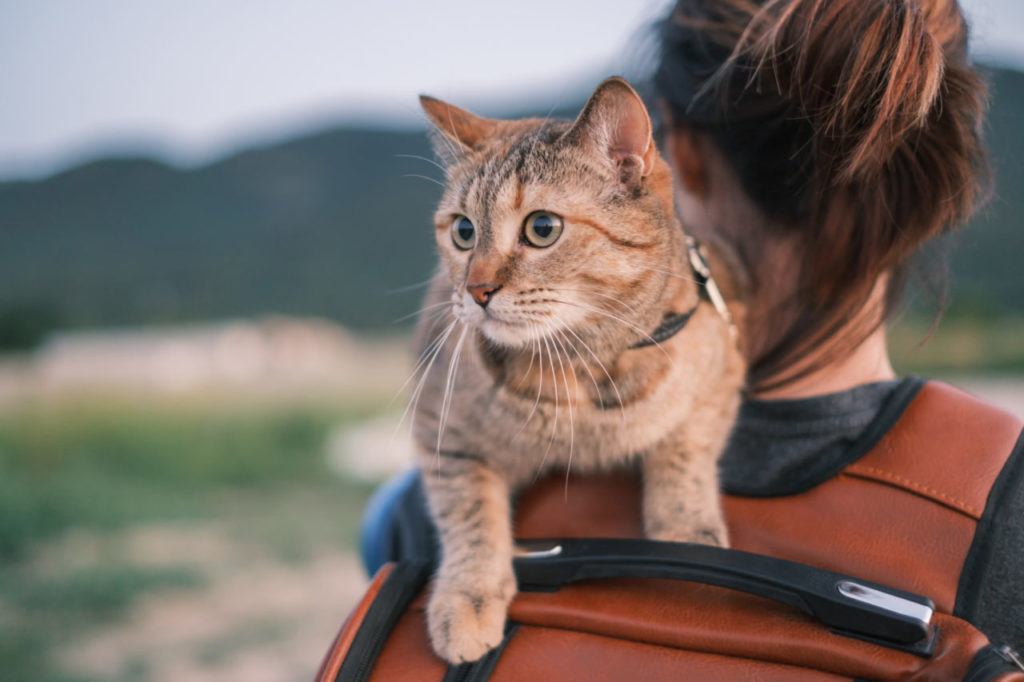Other than flopping on visitors’ feet and offering up his belly before they make it to the living room, Atlas’ favorite activity is spending time on his porch in Linda Martin’s home.
Martin lives in the Glenmere neighborhood in Greeley and belongs to Atlas, who has spent the last eight years of his feline life with Martin, living it up after what anyone would call a rough start. He was bitten by a dog and dumped at West Ridge Animal Hospital, where his owners told the stunned vets to put him down because they didn’t want to pay the bill. West Ridge instead offered to adopt him out, and Martin saw his flyer when she went in to euthanize Luke, her cat of 17 years, in 2013. She thought about Atlas as he recovered at the clinic and finally took him in.
“I thought, ‘That was a pretty bad start to life,’” Martin says. “Maybe I could make it better.”
Oh, she did. Atlas loves laps, visitors and clawing an old couch in the living room (he’s allowed), but most of all, he loves his time in the sun watching birds on his “catio,” a screened-in porch that allows him outdoor time without actually letting him roam outside.
Martin believes he might still make a dash for freedom, if she, say, left the front door open for a bit, but Atlas seems pretty content to stay safe in a world without angry dogs, other cats or cars. Still, he loves his porch time. He dines “al fresco,” Martin says, and would probably spend all day and night out there if he could.
“I have to pick him up at 11 p.m. and bring him into the house,” Martin says.
Outdoor cats raise the ire of bird lovers, vets and neighbors. But some owners, such as Martin, are offering alternatives for their feline friends. In addition to catios, aka enclosed porches—some come with perches—feline owners have installed big windows by their bird feeders and even trained their cats to walk outside with a harness.
Yes, you can walk your cat.

Atlas enjoying time on his “catio.”
Cute and cuddly killers
We know it seems hard to believe, but your cute, fluffy cat currently tearing the head off a squeaky mouse toy would probably love a chance to do the same thing to a real one.
There are an estimated 117 million free-roaming cats in the U.S., says Sheila Webber, the education chair for the Fort Collins Audubon Society. This number includes feral cats. Both feral and pet cats are devastating to the local bird population.
“That’s a huge amount of non-native predators,” Webber says. “I’ve taken many birds to rehabilitation centers, as an example.”
This is especially true when baby birds are out of the nest, on the ground, but still learning how to fly. Their parents still feed them. If a cat comes by, it’s curtains for the bird. Other mammals are killed as well, including squirrels, chipmunks and voles. The Audubon Society estimates that more than a billion birds and critters are killed every year.
“Birds are really declining because of climate change, urbanization and insecticide use,” says Ron Harden, a director of the Fort Collins society who has volunteered doing bird surveys in Rocky Mountain National Park and for the U.S. Geological Service. “In the last two years, the number of individual bird species is tremendously down. They don’t need cats to add to their problems.”
Neither one blames cats. Harden calls it a “people problem.”
“It’s very possible to train cats to be indoor cats,” Harden says. “Our cat lived to be 23. Our daughter has four cats. They’re all indoor cats.”
Cats probably won’t live to see 23 if they are let out, says Colin Combs, the owner of West Ridge Animal Hospital. Outdoor cats get into fights, catch diseases and are injured or killed by dangers such as cars, dogs or jerks with BB guns (and yes, Combs recently treated a cat paralyzed when someone shot it with a pellet gun).
Webber says bigger birds will turn the tables on cats, too. Owls, for instance, will take cats.
“It’s an unsafe world out there for cats, unfortunately,” Combs says. “We feel as if they have a shorter life span living outdoors.”
Stress relief
But environmental enrichment is important for cats, Combs says. Indoor cats can have a higher stress level (this is also true of humans and dogs who don’t get outside). He supports all the ideas listed above, including screened patios and allowing cats to sit in windows where they can see outside.
“That’s an improvement,” Combs says. “It satisfies their predatory drive.”

Young woman walking with cute ginger cat on her shoulder in summer park.
He says a leash for a cat “was a tough one but a cool idea.” If your cat refuses a leash, it’s OK, sometimes, to go outside with them, maybe in the backyard.
“Cats love to roll around in the dirt and eat grass and throw up,” he says. “It’s their favorite hobby besides killing birds.”
Audra Chapin’s cat, Random, not only allows a harness with a leash, she loves it, especially when Chapin’s kids are outside. She took in Random after she showed up at her door as a kitten. Chapin believes she was dumped.
“If my kids go outside, she’s pacing at the door and meowing,” Chapin says. “She knows what it’s for. If we grab the harness, she runs and waits for the door to open.”
Chapin use to live in Greeley but now lives in rural Brush and still goes to West Ridge Animal Hospital. Random didn’t love the leash at first but learned how to tolerate it once she figured out it meant she got to go outside. Chapin has a tie out front normally used for dogs and supervises Random when she’s on the line.
“She’s very tolerant of putting it on,” Chapin says of the harness.
Chapin lives in a rural area, so she doesn’t let Random outside because there are too many predators that could grab her, including raptors, coyotes and dogs.
“We couldn’t fathom anything like that happening to her,” Chapin says.







